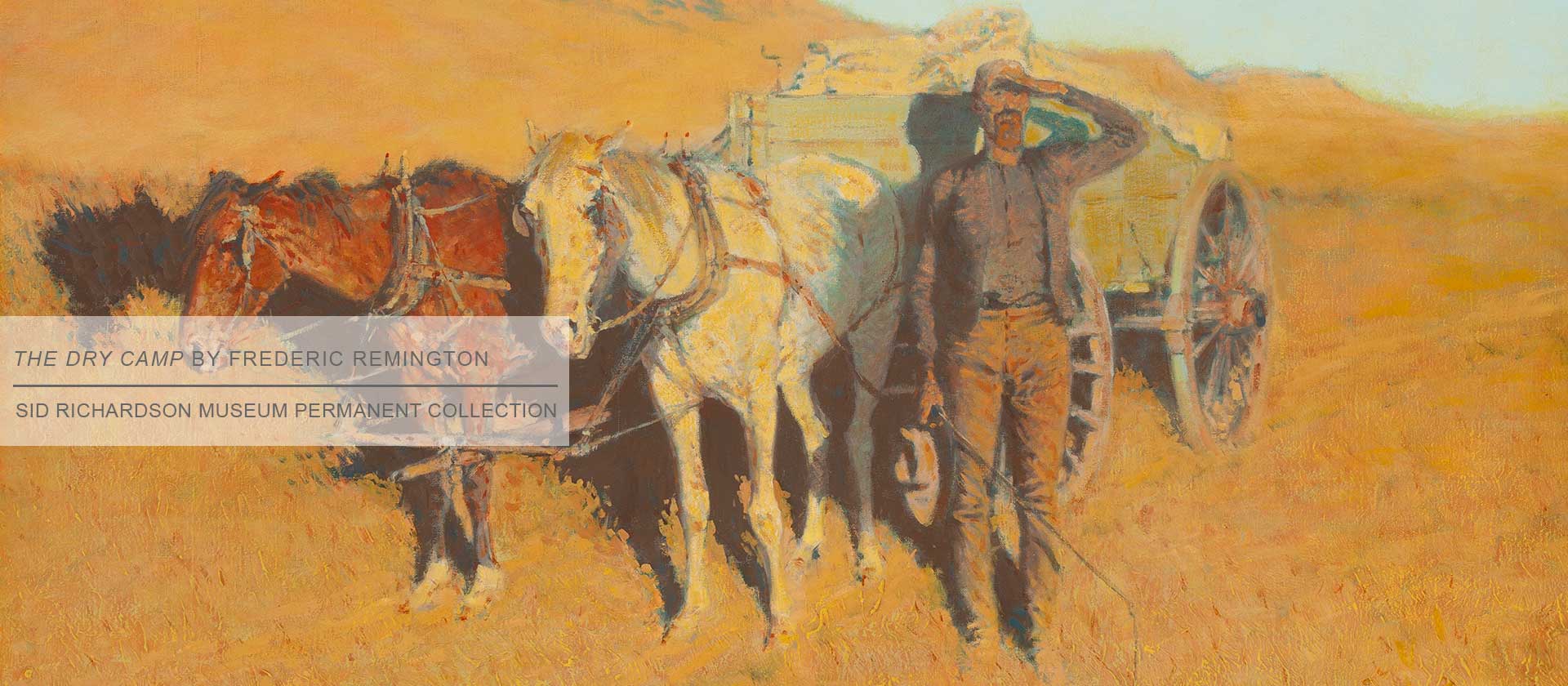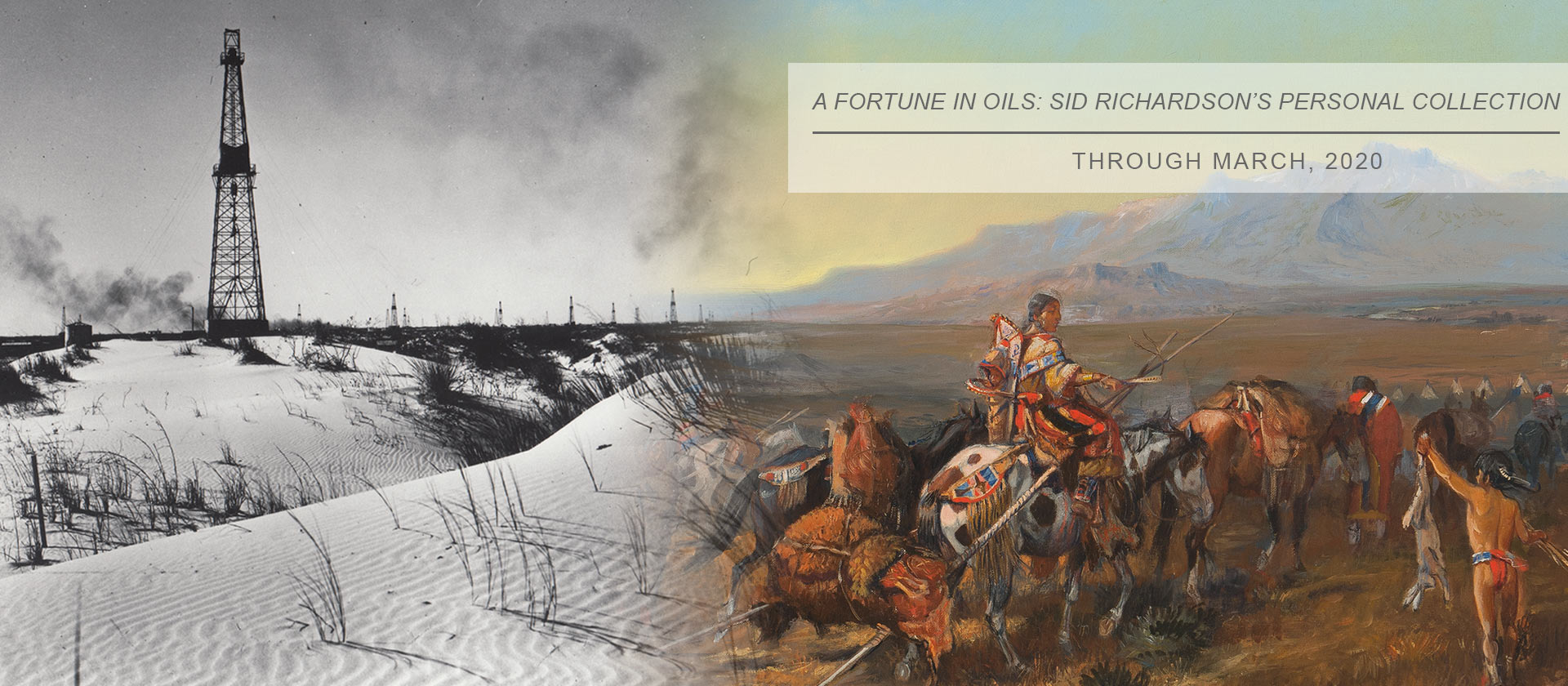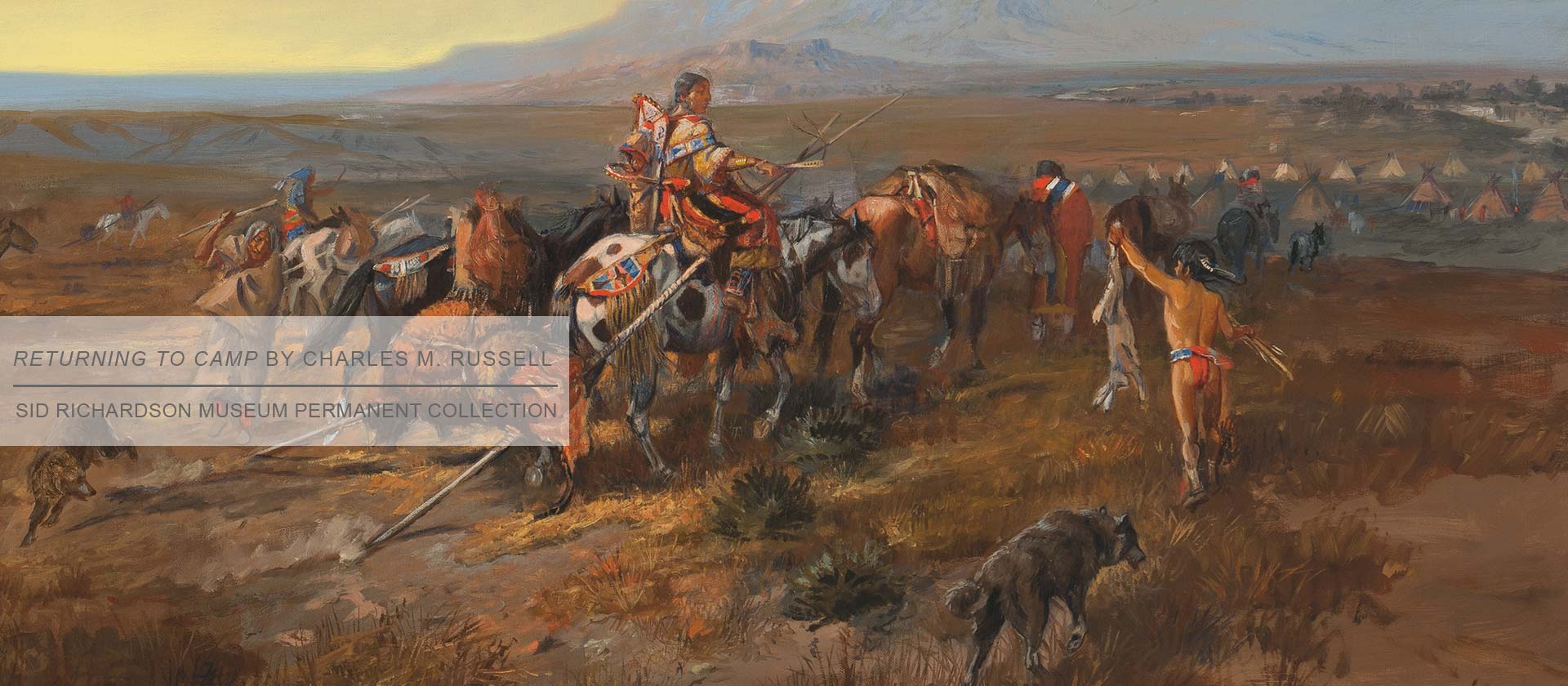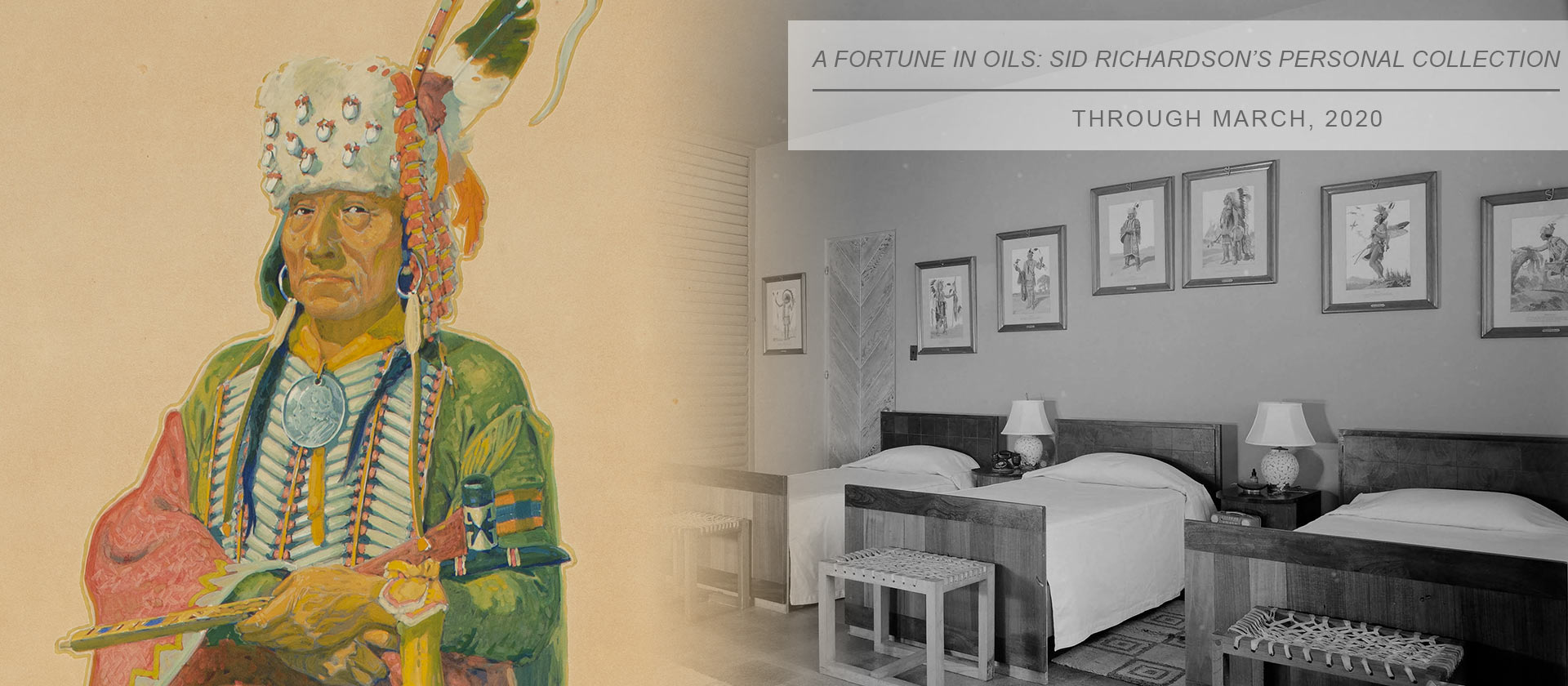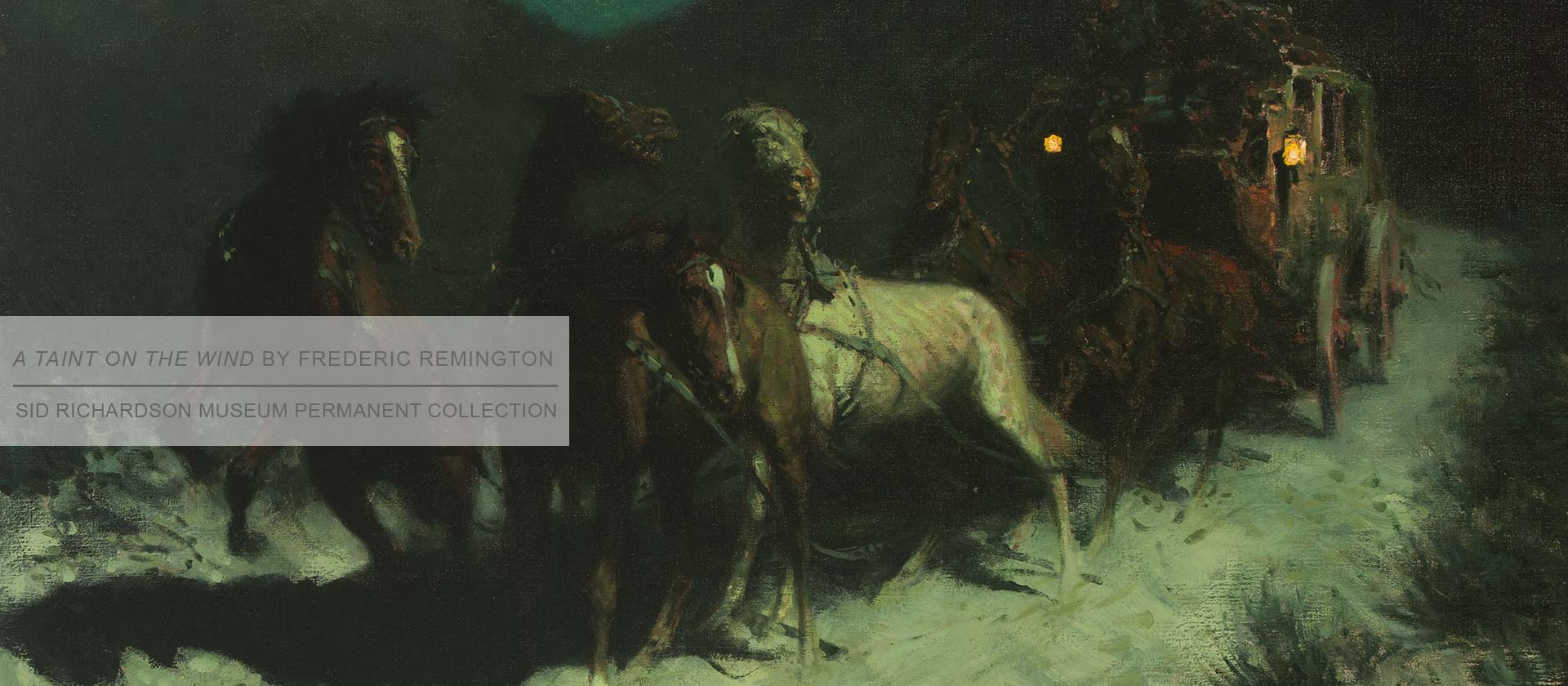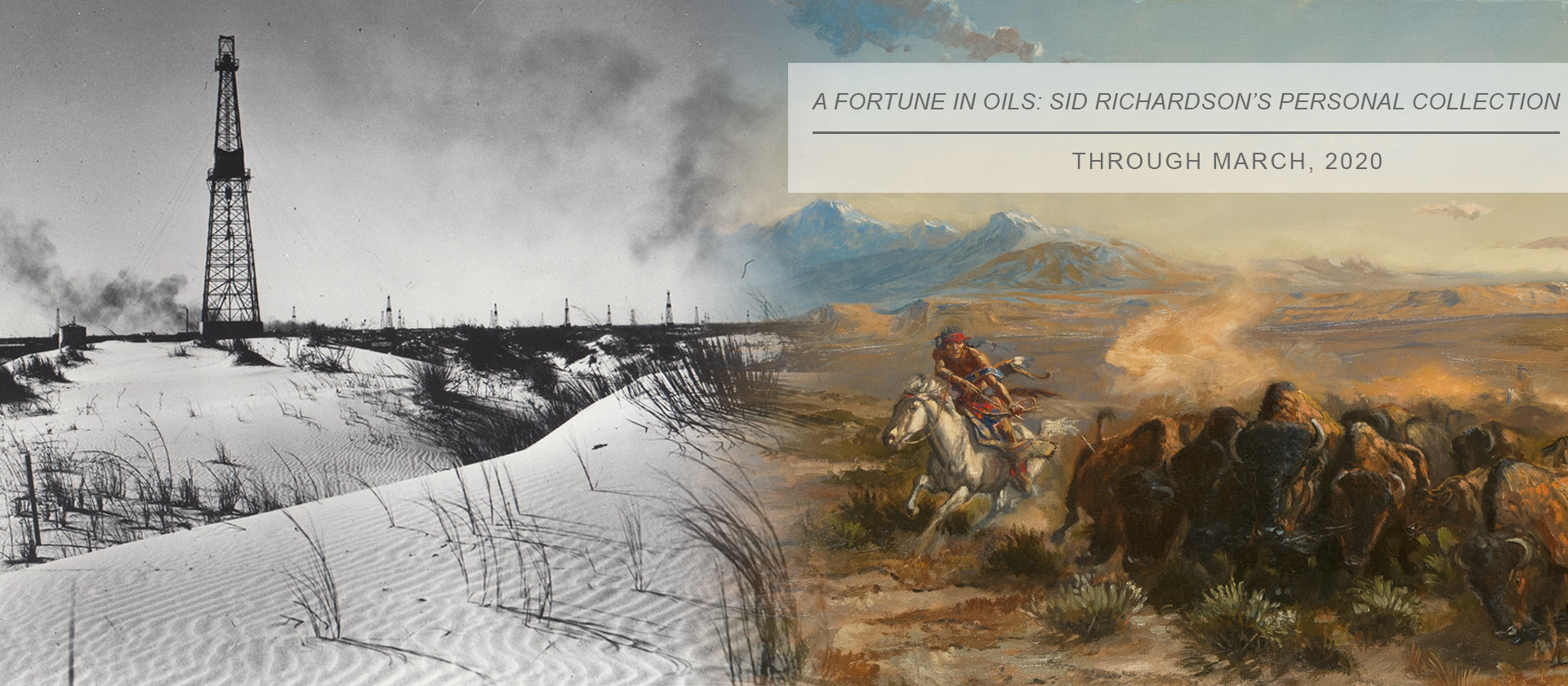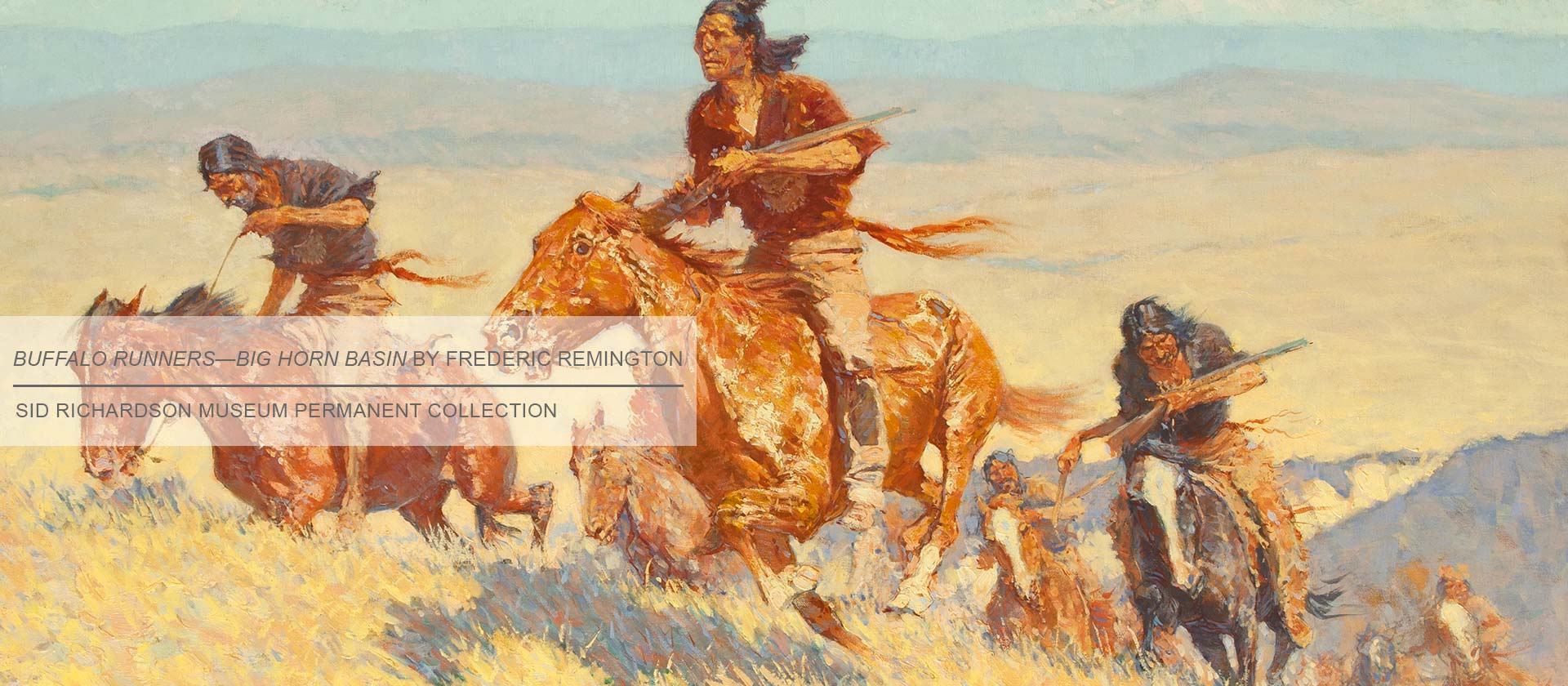Hide & Horn is a cattle trail-era focus exhibition featuring collectors' items that honor and illuminate the greatest migration of livestock in world history. Displays include an 1873 trail map and guidebook for drovers, one of the four most important books on the cattle industry and one of the best books about the Texas Longhorn cattle breed during the 19th century. Visitors will view rarely seen items from the Sid Richardson Museum’s permanent collection as well as “Guests of Honor” items on loan from the Rees-Jones Collection in Dallas and from another private collection.
This focus exhibition will be on display concurrently with the museum’s current exhibition, Legacy, which depicts the clash of cultures of the 19th century American West. Admission is free to the museum at 309 Main St. in Sundance Square in downtown Fort Worth.
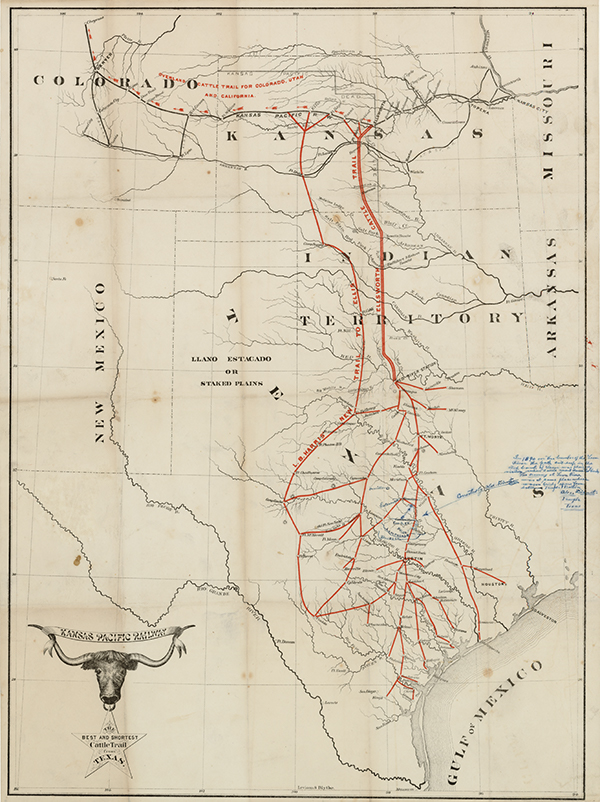
About the Chisholm Trail (1867‒1884)
According to the Texas State Historical Association, after the Civil War, the growing demand for beef was supplied by Texas Longhorn cattle. Sturdy and able to graze on whatever plant material was available, the breed was particularly suited to cattle drives. From the feeder trails in South Texas across Indian Territory (Oklahoma) to railheads in Kansas, the trail was the major route out of Texas for livestock. The market provided a steady source of income for Texas ranchers. In its brief existence, it had been followed by more than five million cattle and a million mustangs, the greatest migration of livestock in world history. The Trail was named after the Scot-Cherokee trader Jesse Chisholm. “Predating the arrival of the train and discovery of oil, the Chisholm Trail era was an indispensable, early chapter in Fort Worth’s history,” said Mary Burke, director of the Sid Richardson Museum. “Being a waypoint along the trail spurred the city’s early growth and helped define its Western heritage, which even today differentiates Fort Worth from any other city.”
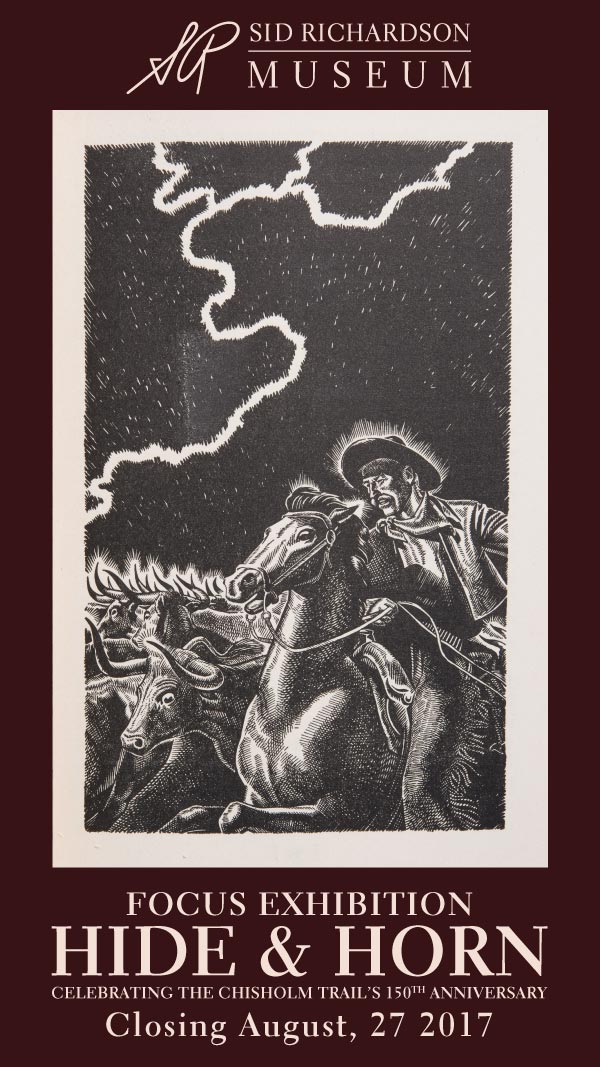
Rees-Jones Collection in Dallas
The Rees-Jones Collection is devoted to the history and legacy of Texas and the trans-Mississippi West. The collection includes fine art as well as rare and historically significant books, maps, manuscripts, and archival materials on the discovery, exploration, settlement and interpretation of the trans-Mississippi West.
